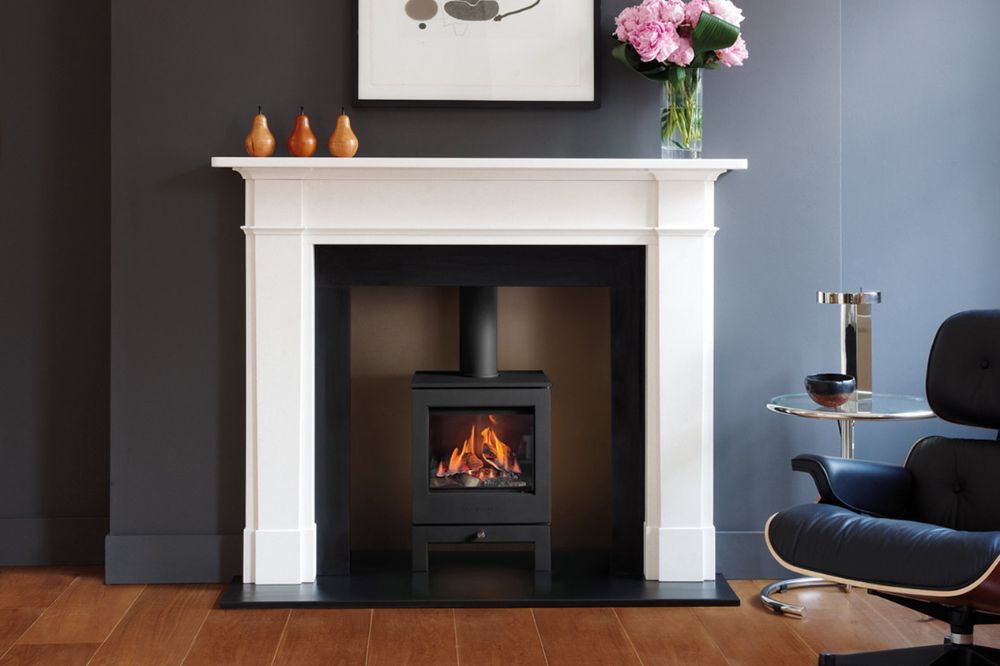

A wood-burning stove should offer comfort, elegance, and reliable performance. So when smoke begins to enter the room rather than rise quietly through the chimney, it’s both unpleasant and concerning. At Chesneys, we understand that even the finest appliances can experience issues when installation, fuel, or maintenance aren’t quite right.
Below, we’ve outlined the most common causes of smoke escape, along with practical solutions to restore your fire to perfect working order.
1. Blocked or Poorly Ventilated Flue
A stove is only as efficient as its flue. If your chimney is blocked by soot, creosote, or even bird nests, it will struggle to expel smoke, forcing it back into your living space.
Regular chimney sweeping is essential. For most users, an annual sweep is sufficient; for frequent use or resinous woods, quarterly may be prudent.
If the chimney is clean and the issue persists, ensure the flue is fully open. If the draft remains poor, it may be time to consult a qualified professional.
2. Burning Wet or Unseasoned Wood
Moisture is the enemy of clean combustion. Wood with over 20% moisture content is difficult to light, burns inefficiently, and produces excessive smoke and tar.
Always choose kiln-dried or properly seasoned hardwoods. Dry wood not only burns hotter and cleaner – it also protects your stove and flue over time.
3. Cold Flue or Chimney
In cold weather, a chimney can develop an air pocket that impedes smoke from rising.
Pre-warming the flue with 2 wax firelighters placed inside the stove with the air lever fully opened.
4. Incorrect Installation or Flue Design
Precision matters. An incorrectly sized or poorly sealed flue can compromise air draw and lead to smoke spillage.
All Chesneys stoves should be installed by a HETAS-certified professional to ensure safe, compliant operation and optimal performance.
5. Overloading the Firebox
Less is often more. Overfilling your stove restricts airflow, preventing complete combustion and resulting in smoke.
Begin with 2 small logs on the base and then a small “jenga” style tower with around 6/8 pieces of dry kindling (top down method). Add 2 x wax style firelighters to the top of the tower and ignite. Ensure that the air lever is in the fully open position. Once the fire is established, add larger logs can be added sparingly.
6. Wind-Driven Downdraught
If smoke issues occur only during gusty weather, the cause may be downdraught—when wind pushes air down the chimney.
An anti-downdraught cowl or cap can prevent this and preserve a consistent draw, even in turbulent conditions.
7. Insufficient Room Ventilation
Today’s homes are often well-insulated – sometimes too well. Without an adequate air supply, a stove may be starved of oxygen and unable to create a proper draft.
Ensure room vents are open. Alternatively, opening a window slightly during use can help establish a steady airflow path during the initial lighting procedure.
When to Call a Professional
If these steps do not resolve the issue – or if the stove struggles to stay lit, burns poorly, or emits unusual smells – it’s time to consult an expert.
For your safety, ensure carbon monoxide alarms are installed and regularly tested. While rare, carbon monoxide is odorless and lethal.
Prevention Is the Best Protection
Most smoking issues are easily preventable with the right fuel, airflow, and maintenance. Keep your chimney swept, burn only dry hardwoods, and never ignore changes in performance.
Should you wish to upgrade your stove – or explore our full collection of traditional and contemporary fireplaces – our experts are here to help you find a piece that blends beautifully into your home and lifestyle.
